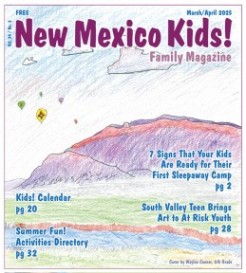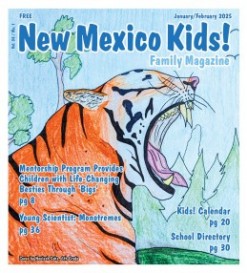Pickleball Gains Traction Among Albuquerque Youth
Pickleball Gains Traction Among Albuquerque Youth
July 30, 2024By AUTUMN GRAY

Once a sport associated mainly with retirees and grandparents, pickleball is now being adopted as a favorite among youth and as a way to bring multiple generations together. That’s just the way it was intended when the sport, a cross between ping pong, badminton, and tennis, was created in 1965.
It was summer that year, and two families had come together for some leisure time at a home that one of them owned near Seattle. Sitting around with nothing to do, they improvised a game that employed an old badminton court on the property, some ping-pong paddles, a perforated plastic ball, and a relatively low net. Rules that relied heavily on badminton were created, “keeping in mind the original purpose, which was to provide a game that the whole family could play together.” That’s the origin story according to USA Pickleball (USAP), the national governing body for the sport in the U.S.
Pickleball continued to be America’s fastest growing sport for the third consecutive year in 2023, but research shows the average age of players – now at 35 - is dropping. In fact, the fastest growing age group for pickleball is younger than 24, with ages 6-17 comprising about 22 percent of pickleball players,
according to the 2023 Sports & Fitness Industry Association’s Topline Participation Report.
Indeed, the sport has been gaining popularity among local youth since Albuquerque Public Schools began collaborating with the nonprofit New Mexico and Arizona Pickleball Association (NMAPA). In just the last year, the Albuquerque-based organization has provided more than 20 APS schools with youth pickleball equipment grants. A typical grant consists of about $500 worth of equipment: 12-16 paddles, 24-32 balls, a few nets, and court-lining tape. The NMAPA also works with APS physical education teachers to help them learn the game.
“(The NMPA) has been integral to bringing pickleball to APS,” said APS student wellness coordinator Ragan Montoya. “We at APS understand how important physical activity is for students to help them be successful in school and in life after graduation.”
NMAPA president Larry Lite said he started approaching schools after the pandemic because he and the organization wanted to give back to the community. Lite had been the Southwest regional director for USA Pickleball until just last year, when the national organization restructured, dissolving all of its regional nonprofit arms. However, the USAP allowed its regional directors to transfer any money they raised from regional tournaments to newly-created local nonprofits, if they so desired. That’s when Lite and his board formed the NMAPA, an all-volunteer organization. Part of its mission is to increase pickleball access for New Mexico schoolchildren via grants for pickleball equipment.
Lite said the NMAPA has provided 26 grants to elementary, middle, and high schools across New Mexico since August 2023. One of those went to Explore Academy, a charter school in Albuquerque.
“It was like Christmas in February,” said Explore Academy’s Jennifer Perez, who applied for an NMAPA grant via a brief online form when the school ran out of funds to replace pickleball balls and court tape.
Perez, who is the academy’s physical education/health teacher and Electives Department coordinator, introduced pickleball to its middle and high schoolers as an official program in the fall of 2023, using tape to mark off pickleball lines in the school’s basketball court.
“It was a great opportunity across the board - for those students who may see themselves as less than athletic, as well as for those who are. Both parties took to it,” Perez said. “Once they get the rules down, they find it a very simple sport to play, and some of them have grandparents or parents who also play.”
Perez said she is partial to pickleball for youth not only because it’s naturally more inclusive than some other sports but also because of its numerous health benefits: It helps build stronger muscles and flexibility; it improves speed, agility, balance, and coordination; and it promotes fast footwork and rapid eye-hand coordination.
“You can see the progression (in the students) from when we started,” Perez said of the approximately 140 who have participated.
Now, instead of dropping pickleball as the academy may have done without the grant, the school is continuing with pickleball as part of the curriculum and even adding an after-school Pickleball Club.
The NMAPA is seeking ways to support schools and youth organizations in underserved communities. For more information or to apply for a local pickleball grant, visit nmapickleball.org.
USA Pickleball offers a Youth Program Provider Membership for physical education teachers, youth program leaders at Park & Rec Centers, and after-school programs. It also provides turn-key resources to help organizations easily implement a pickleball program. These include a Youth Pickleball Playbook composed of fun play formats and dynamic games, youth activity plans, and access to equipment discounts. An instructional video series on the organization’s website is designed to help teachers, recreation leaders, after-school staff, and coaches on how to implement pickleball in any recreation setting, including schools, parks, youth centers and racquet/paddle facilities. Grants are also available to help jumpstart facilitating qualifying programs. For more information, visit USA Pickleball’s Youth Program Provider.  embership
embership




